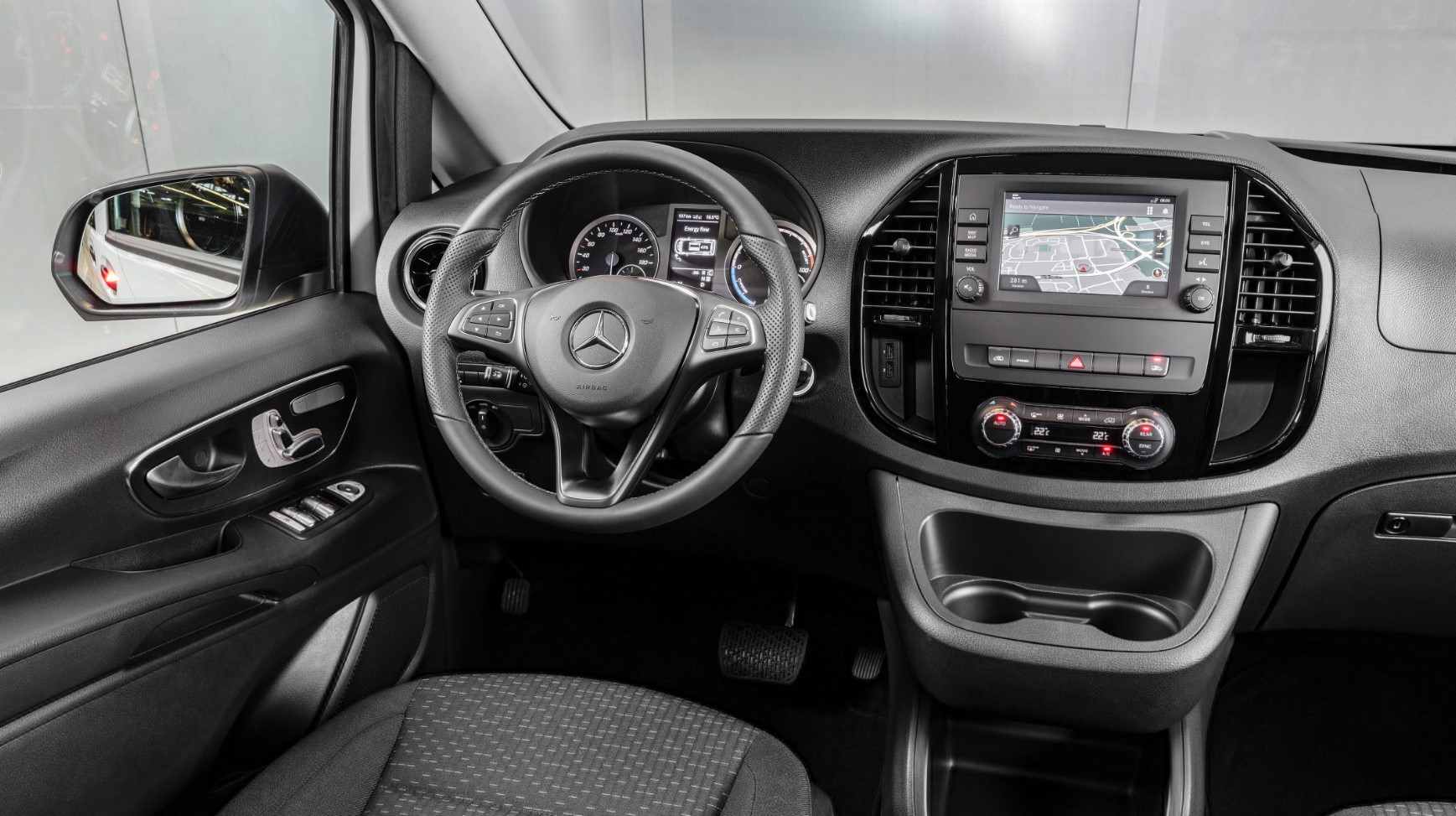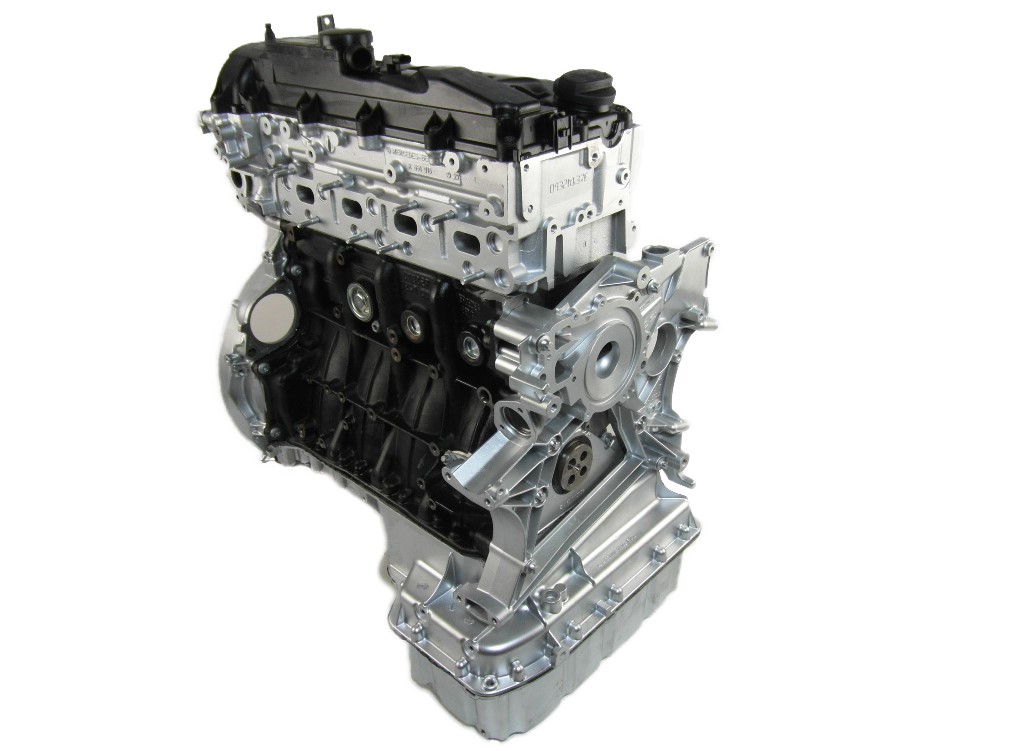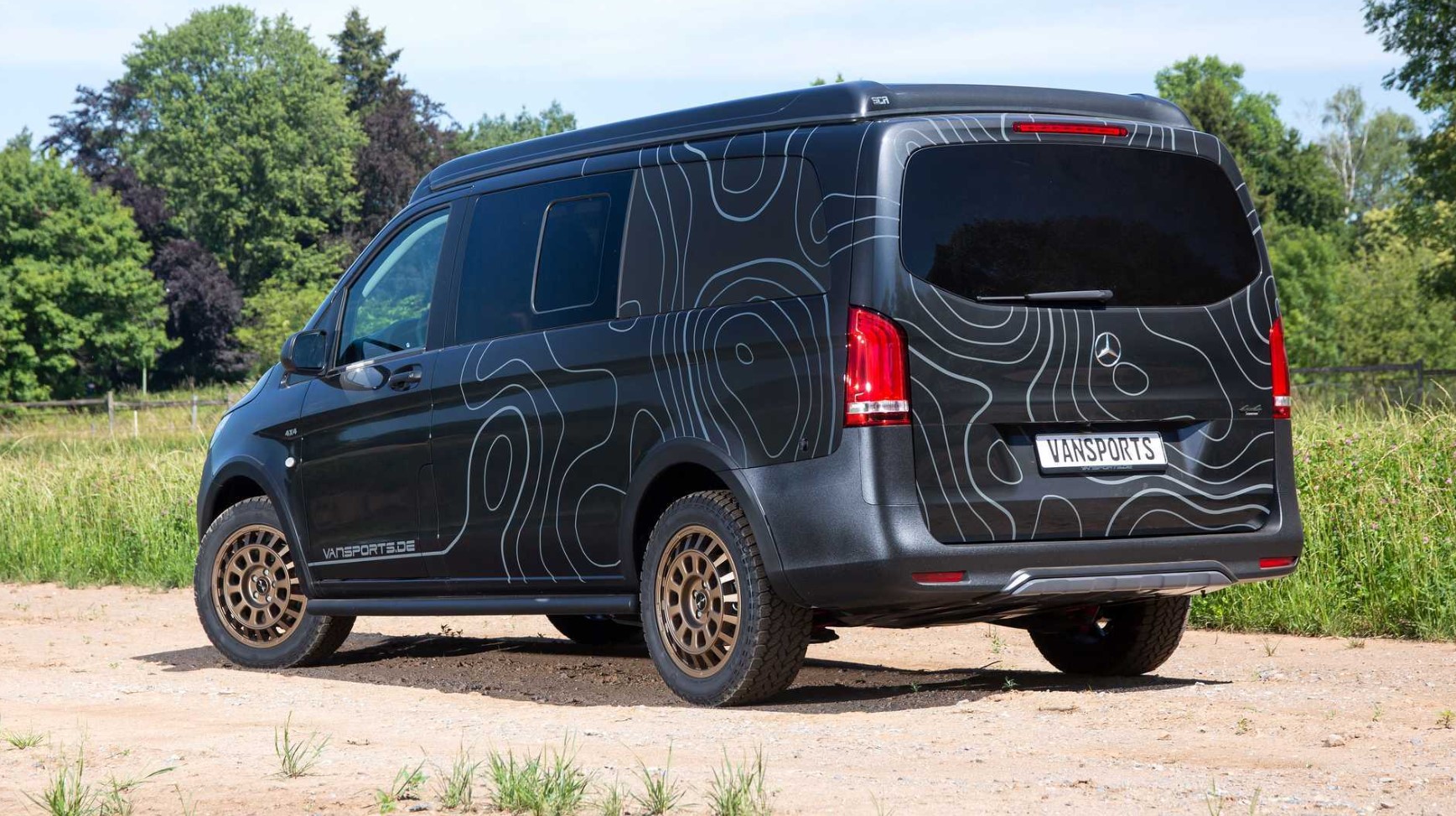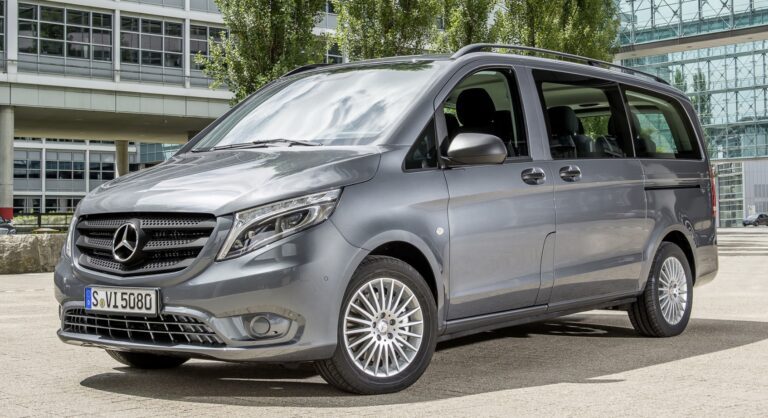2027 Mercedes Vito Performance, Features, Dimensions
2027 Mercedes Vito Performance, Features, Dimensions – In spite of its extended availability, the 2027 Mercedes Vito is still a great choice. This spacious vehicle, which falls between in the middle of the Citan and the Sprinter, provides excellent value for its size. Ford Transit Custom and other newer, more technologically capable rivals aren’t the only well-known, older brands that the Vito faces out against. Other formidable opponents include the Vauxhall Vivaro, Citroen Dispatch, Peugeot Expert, Renault Trafic, and Volkswagen Transporter. The Vito isn’t the cheapest van on the market, but it makes a good argument when compared to its rivals. The three-pointed star emblem adds an air of refinement to the car.
The new Vito van has been available since 2014, but thanks to improvements and a more condensed model choice, it has managed to stay competitive. All of the other vans in the lineup have L2 or L3 body lengths and rear-wheel drive, save for the electric eVito, which is the only vehicle available with front-wheel drive. Diesel versions using front-wheel drive are no longer being manufactured. There are three- and six-seat panel vans and crew cabs at your disposal.
In order to make the Mercedes V-Class into a Vito, you may swap out the bodyshells if you want extra seating. But as it’s better suited for luxury executive transportation, the vehicle in question is priced suitably. 2027 Mercedes Vito Performance
2027 Mercedes Vito Redesign and Update Plan
Exterior & Interior
With 6.0 cubic meters in the L2 panel van and 6.6 cubic meters in the L3 panel van, the Vito has more than enough cargo room for most scenarios. When it comes to vans with taller roofs, Mercedes is on par with competitors like the Ford Transit Custom and the Renault Trafic.
Loads as long as 2,290 mm and 2,520 mm may be accommodated by each panel van. However, cargo with a length of 2,831 mm or 3,061 mm can be transported to the cabin through an opening hatch in the bulkhead.
While other competitors can carry loads greater than one tonne, ours can carry anything from 873 to 930 kg. There will be a noticeable drop in the eVito’s range as you approach its maximum load capacity of 882 kg.
You may access the vehicle’s back using either the rising tailgate or the dual barn doors, and there’s no extra charge for either one. Window options for the Mercedes’ sliding side doors and the steel bulkhead separating the cargo area from the interior are available for customization. Sliding side doors aren’t standard on many competitors’ vehicles, but Mercedes includes them.
Both the L2 and the L3 crew vans have 3.6 and 4.1 cubic meters of storage space, respectively. The floor length is 1,397 mm (or 1,631 mm for the L3 model), however without the optional bulkhead, long, thin objects can pass beneath the second-row seats. You may achieve a payload weight ranging from 781 to 809 kg.
The Crew Van does include a bench seat at the back, but it lacks the adjustability of a regular minivan’s seats. They don’t fold flat, but taking them out makes more room for storage. Nevertheless, they are cumbersome, hefty, and arranged in a 2+1 fashion when removed from the vehicle. The next step is to choose a good spot to put them. You can have floor rails to keep your belongings in the rear of your Mercedes van, and the wood flooring that comes standard may be extended to the sides for even more security.
Although both the Vito and the V-Class passenger carrier are made in Vitoria, Northern Spain, there are noticeable interior variations between the two, especially when compared to earlier variants.
The Vito’s strong and durable front fascia stands in stark contrast to the V-Class’s typical Mercedes passenger car plushness. The design is uncomplicated, however the workmanship is superb. Polymers have been reinforced for commercial use; the controls and circular air vents are sourced from passenger cars.
The Vito may be little, but it has a seven-inch touchscreen screen, Bluetooth, DAB radio, Apple CarPlay, and Android Auto—all in a little package. Two USB-A ports are located beneath the touchscreen, allowing you to easily connect any external devices you may own. The door pockets are roomy enough for little things, but larger ones will be a squeeze, especially without a shelf.
In keeping with its competitors, Mercedes has opted not to come standard on the Vito with integrated mounts for laptops and mobile devices. The research warns against the risks of other options, such as using a phone while driving or trying to balance a laptop, but the appealing tailored “mobile office” solutions appear far more practical. Instead of making do with an unlined cubby hole on the dashboard, the majority of drivers will probably invest in an aftermarket phone cradle.
Excellent lateral support, several adjustment options (including height), and sturdy construction characterize the Vito’s seats. Because of its more automobile-like handling and lower ride height, it outperforms the Vivaro and the Ford Transit Custom.
The Vito has great visibility, much as other passenger vans. If you have the space, the reverse camera, parking sensors (both front and back), and how easy it is to install will make low-speed moves a breeze.
Three persons can fit comfortably in the roomy interior of the Vito without bumping elbows, and two adults may ride shotgun in the rear seat. The passenger in the middle seat can rest their arm on the armrest to avoid touching the driver. While the front passenger seat is immovable, the driver’s seat may be adjusted in height and angled to your liking. Travelers shouldn’t think this is a problem, though, because there is plenty of legroom.
Three grown-ups can squeeze into the Vito Crew Van’s bench seat in the rear. The fact that it’s fastened to the front passenger seat means that, despite its considerable storage space, it cannot be folded or flipped forward to make room for additional cargo. That can only be accomplished by totally wiping them out, which is no small feat. The Night Edition upgrades the car with heated front seats and faux leather upholstery. Be that as it may, you can get all the comforts of a V-Class at a lower price point. 2027 Mercedes Vito Performance
2027 Mercedes Vito Specs
Engine & Performance
The Vito is offered in Crew Van sizes of 3.6 or 4.1 cubic meters, and its panel van load capacities of 6.0 or 6.6 cubic meters are competitive with the top medium-sized vans on the market. The Mercedes van has an integrated baggage area and passenger compartment, unlike some of its competitors; however, a bulkhead separation is available as an aftermarket accessory.
The Vito is available with a choice of three diesel engines, including an electric variant. A 2.0-liter inline-four is standard across all three diesel variants (114 CDI, 116 CDI, and 119 CDI). With its 132 horsepower and option for either a six-speed manual or nine-speed automatic gearbox, the 114 CDI is a formidable rider. Both the 114 CDI and the 116 CDI lack a manual transmission, despite having 184 horsepower.
The engines that come with each of the three trim levels are directly proportionate to that level. Begin with the most basic electric eVito model or the least powerful diesel engine available. Ascend to the Premium trim level to have access to the mid-range 116 CDI engine and all the other features. The most expensive Premium Night Edition not only comes with the most potent diesel engine, but it also looks absolutely breathtaking.
The latter’s considerable enhancements combine the regular van’s functionality with the V-Class’s premium appeal. The standard Obsidian Black metallic paint and color-coded front and rear bumpers make the crew van configuration more understated, and the rear bodywork integrates smoothly with the dark-tinted rear windows of the sliding doors. The front bumper is chrome-adorned and has identical LED headlamps and diamond-cut alloy wheels.
Even though Vitos are typically well-made, asking more money for an older van with a Mercedes badge on the nose seems outrageous. That being said, the Vito is a great pick for those who value elegance, sophistication, flair, and technology.
Instead of smaller diesel engines, the latest Vito models employ a 2.0-liter four-cylinder turbodiesel in various configurations, just like its mid-sized van rivals. Each unit is more responsive as a result of the increased capacity, which aids in the delivery of more muscle.
With 114 bhp, 116 bhp, and 119 bhp, 184 bhp, and 400 Nm of torque, respectively, are the three CDI variants that are shown. Do not overexert yourself when pulling large objects, as the three engines’ maximum torque values are achieved at rpms below 1,400.
Wet roads are no match for the Vito’s rear-wheel-drive technology, which grants it exceptional lane-holding and corner-exit grip. As they made their way across town, the L2 van and its L3 equivalent had turning circles of 11.8 and 12.5 meters, respectively.
While the 9G-Tronic auto is an optional option, the 114 CDI comes standard with the more powerful engines. When left alone, the source—Mercedes passenger cars—performs admirably. You can shift speeds with an almost imperceptible lag thanks to the paddles that are mounted behind the wheel. Although the automatic transmission is a fantastic option for vans, not everyone can afford it.
Choosing the eVito might lead to a respectable acceleration straight away. At low speeds, the road is smooth, but as you gain speed, the noise from your tires will be your biggest concern. Meanwhile, the van’s driving range might be severely reduced if the accelerator is used excessively.
As with previous Mercedes vans, the Vito’s interior gives the driver a sense of stability and solidity. You won’t get the same sense of connection to the road thanks to the electromechanical steering system because it isn’t as weighted as the greatest drivers’ vans. Even with the usual hill hold function, we initially found the foot-operated parking brake to be a bit peculiar. Automated transmissions make using a manual gearbox much easier.
Road noise enters the Crew Van at higher frequencies due to the absence of a rear bulkhead that separates the cabin from the cargo compartment. It may be noticeable, but it won’t hinder your daily life. For around £100, you can get a full-height bulkhead to fix this. 2027 Mercedes Vito Performance
2027 Mercedes Vito Fuel Economy
Diesel Vito vehicles without front-wheel drive have worse gas mileage on average. With an automatic transmission, the combined fuel efficiency of the 114 CDI manual decreases to 38.2mpg from 38.7mpg.
According to the official WLTP test, the standard 116 CDI diesel achieves 37.6 miles per gallon, while the premium 119 CDI engine achieves 36.7 miles per gallon. The Crew Van’s increased mass results in fuel efficiency ratings between 35.8 and 37.1 mpg; nevertheless, the 116 CDI and 119 CDI diesels are the only ones available in this region.
In order to increase aerodynamic efficiency, all vans come standard with stop-start engines, low-rolling-resistance tires, and aerodynamic panels fitted under the vehicle. The AdBlue system uses SCR exhaust after-treatment technology, which is one way to fulfill the current emissions rules. This van has an AdBlue tank fitted since the trip computer will inform you when the 24-liter tank needs to be replaced.
The Vito should have a fuel economy of about 420 kilometers per tank with its conventional 57-liter fuel tank. The range can be readily increased by 100 miles with the bigger 70-liter tank that Mercedes provides as an option, even with the worst official fuel efficiency estimates.
Official tests limited the range of the first electric eVito to 93 miles due to its 41 kWh battery. The most recent model, on the other hand, has a range of 162 miles thanks to its bigger 66 kWh pack, of which 60 kWh are usable. Under normal conditions, you shouldn’t have any trouble getting that range while driving aggressively on stop-start metropolitan runs. As you accelerate on highways, the range decreases dramatically. It takes around 35 minutes to charge the eVito to a capacity of 10-80% using a quick charger, and just under 10 hours with a 7kW wallbox charger (due to the maximum charging speed of 80kW).
The maximum number of miles that the Vito may travel without service is 25,000—roughly equivalent to two years. The onboard ASSYST computer uses a number of factors to pinpoint exactly when a service is required. The 12-year anti-corrosion warranty is made possible by the van’s entirely galvanized body, and up to 6.4% less maintenance and repair expenditures are incurred compared to the previous Vito.
2027 Mercedes Vito Safety Features
Mercedes has a long history of providing comprehensive safety features, and the Vito is no exception. A variety of technologies are available to assist you in preventing accidents. All models come with front and rear airbags as standard, and you can get pelvic and window bags as extras. There are no extra airbags included in the Crew Van to protect the rear passengers. In an effort to supplant airbags, Mercedes created a set of safety measures called adaptive electronic stability program (ESP). Some of these features are electronic brakeforce distribution (EBD), anti-skid regulation (ASR), anti-lock brakes (ABS), load adaptive control (LAC), and understeer control (UEC).
Thanks to its rear-wheel drive configuration, the Vito is ideal for towing. Additionally, the trailer stability aid (TSA) system detects trailers and adjusts the electronic stability program (ESP) parameters to avoid fishtailing. When attaching a trailer, the “coupling zoom” function of the rear-parking camera makes it easier to see the towing hitch.
Mercedes’ adaptive cruise control allows you to set a predetermined distance from the vehicle. Additionally, lane keeping assist will alert you if you veer out of your lane without signaling and the distance warning system will activate if you approach the automobile ahead of you too closely. The premium night edition’s sophisticated lighting system adapts the beam width and brightness of the high-output LED headlights to the driving circumstances. When fully loaded, Vitos are among the most secure vans on the market.
2027 Mercedes Vito Release Date & Price
The base variant of the 2027 Mercedes Vito costs over £30,000 ex.VAT, while the most powerful and luxurious Crew Van costs around £45,000. When compared to the seemingly exorbitant price of a brand-new V-Class, this represents a significant discount when thinking about the Vito as a passenger car. The eVito’s higher price tag is a direct result of its superior battery technology; prices start at about £48,000 (not including taxes).
Note: There is information in this web page post that comes from materials that were available before the release. You may get the most up-to-date information by contacting your local dealership or looking into official sources.






